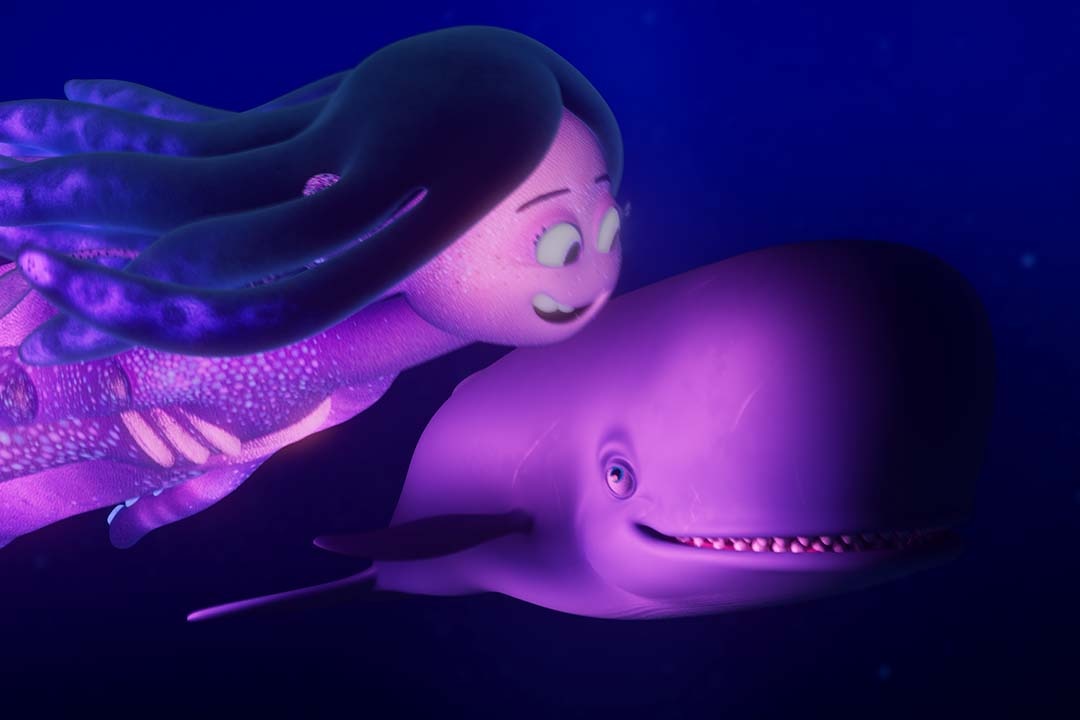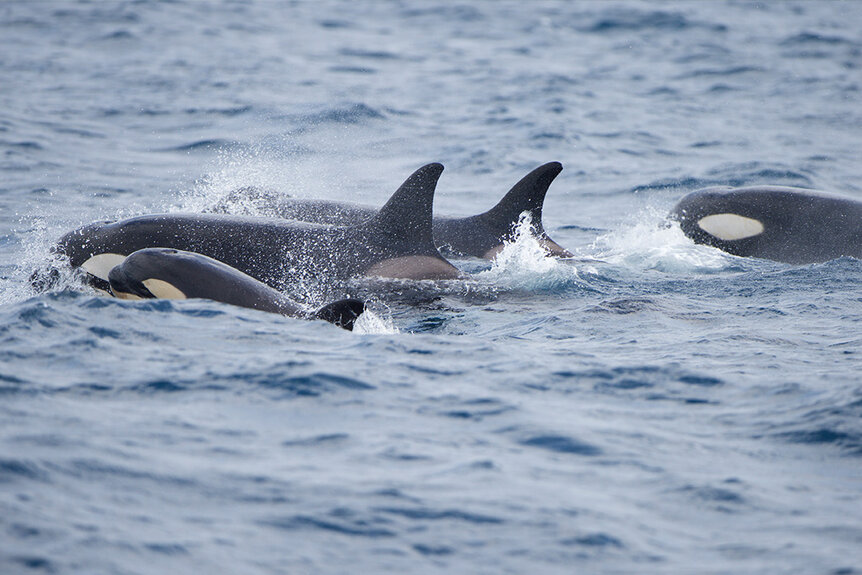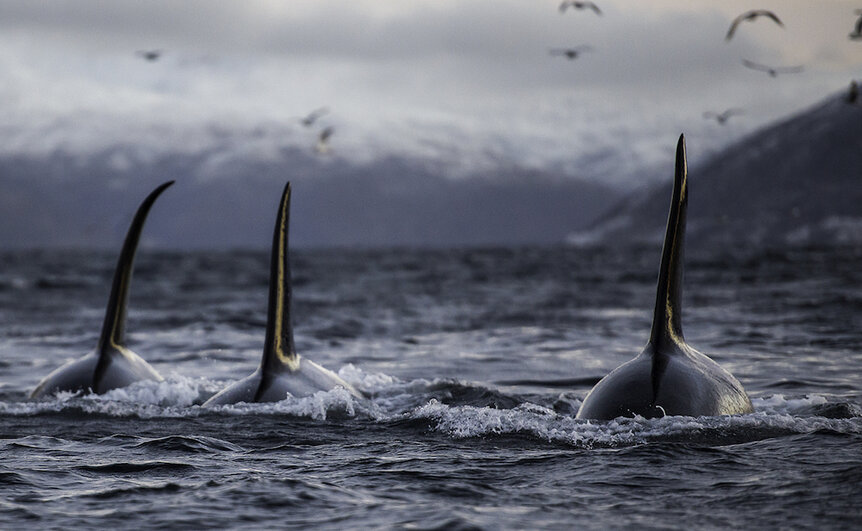Create a free profile to get unlimited access to exclusive videos, sweepstakes, and more!
Newly Discovered Rogue Orcas Are Hunting Whales in the Open Ocean
Orcas never met an ocean they couldn't dominate or a creature they couldn't kill.

The DreamWorks animated film Ruby Gillman, Teenage Kraken features a 16-year-old Ruby, the titular teenage sea monster, as she tries to balance modern teenage life and an ancient aquatic destiny. After she discovers she’s next in line for the kraken throne, Ruby is unwillingly conscripted into an age-old war against wicked mermaids.
You might be surprised by the hidden strength you can muster when the safety of your family (not to mention your social standing) is on the line. By the end, Ruby figures out who she is and settles into her role as the protector of Oceanside. And it’s a good thing too, because there’s a gigantic, killer Devil Whale headed our way.
The closest thing we have to a Devil Whale in the real world is the gorgeous, enigmatic, and entirely brutal killer whale. Orcas, the more accurate name for killer whales, have really come into their own in recent years. In a species-wide rebranding effort the likes of which we’ve never seen before, they’ve come out in full force to violently slaughter great white sharks and systematically sink yachts. Not content simply to defend their title as rulers of the sea, orcas are seemingly expanding their territory to include new parts of the Pacific, filled with a unique killer whale population.
For More on Killer Whales:
Orca-nized Crime is on the Rise as Killer Whales Teach One Another to Steal Fish
Killer Whales Turn the Tide and Start Hunting Boats
A South African Killer Whale Took on a Great White Shark One-on-One and Won
Rogue Killer Whales are Hunting the High Seas
In the Pacific Ocean, off the Coast of California and Oregon, you can typically find killer whales in three varieties: residents, transients, and offshores. Residents stick very close to the shore, living on a diet of small, coastal fish. They are identified by rounded fins and uniform or open saddle patches, the distinctive patches of white near the dorsal fin. Transients have pointed fins and a uniform gray saddle patch. They live a little farther from the shore, where they hunt fish and small marine mammals like seals. The last group, offshores, have rounded fins and uniform or closed saddle patches. They live even farther from the coast, where they battle sharks and other large fish.
Now, researchers at the University of British Columbia have identified a potential fourth group living way out in the open ocean, according to a recent study published in the journal Aquatic Mammals. Scientists identified 49 individuals in a deep ocean pod which couldn’t be matched to any known individuals from any known population.
This unknown group has rounded and pointed fins and saddle patches that don’t resemble any of the other three groups. Researchers also noted the scars leftover by attacks from parasitic cookiecutter sharks, which only live in deep waters.
“While the sizes and shapes of the dorsal fins and saddle patches are similar to transient and offshore ecotypes, the shape of their fins varied, from pointed like transients to rounded like offshore killer whales. Their saddle patch patterns also differed, with some having large uniformly gray saddle patches and others having smooth narrow saddle patches similar to those seen in killer whales in tropical regions,” said first author Josh McInnes, in a statement.
It’s possible this newly identified group is a subpopulation of transient orcas who have moved into a new niche, or they could be a totally unique group we’re only just becoming aware of. When researchers looked through the literature, they found that this group had actually been observed a total of nine times since 1997. Some of those reports came from scientific survey efforts while others came from fishers or tourists. Digging into those records revealed that the differences in these orcas is more than fin deep, resulting in totally novel hunting behaviors.
“In one of the first encounters researchers had with a pod of these oceanic killer whales, they were observed taking on a herd of nine adult female sperm whales, eventually making off with one. It is the first time killer whales have been reported to attack sperm whales on the west coast. Other encounters include an attack on a pygmy sperm whale, predation on a northern elephant seal and Risso’s dolphin, and what appeared to be a post-meal lull after scavenging a leatherback turtle," McInnes said.
Figuring out exactly where this population of killer whales came from and how they relate to other populations in the Pacific will require additional study. Researchers hope to carry out additional observations and acoustic recordings, as well as gather DNA samples to learn more about these unique open ocean predators.
If there’s a new threat out there, we want Ruby Gillman, Teenage Kraken to know about it.




























